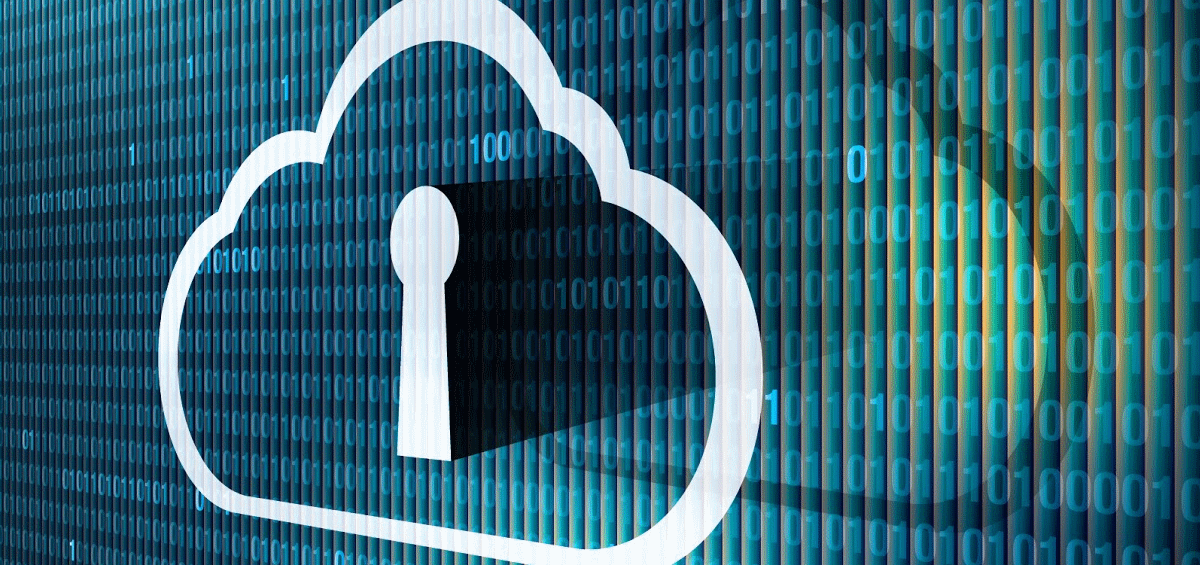
The current era of the Social Web (Web2) has brought us numerous benefits in the form of user-generated content (UGC) and applications. However, as we continue to enjoy these advancements, it’s important to keep in mind the impending arrival of Web3, also known as the Semantic Web.
Table of contents
- Exploring the Benefits of Decentralized Web3
- How Web3, ML, and Blockchain Technology Can Enhance Online Trust?
- What to Expect from Web3: Data Ownership
- Web3 Revolutionized User Experience and Data Privacy
- Explicit User Consent: The Necessity of Ownership Status in Web3
- Enhancing Security with Web3 Technology
- The Autonomous Web3: AI-Powered Cybersecurity
- Securing Your Digital Identity with Web3 Technology
- Financial Losses from Digital Identity Theft in the United States
- Unleash the Potential of Secure Smart Contracts with Web3
- Leveraging AI to Revolutionize Data Interaction
- Web3 Unlocks Novel Technologies and Increased User Benefits
- Maximizing Web3 Adoption Through Expert Investment
- Unlocking the Potential of Web3 in 2023
Exploring the Benefits of Decentralized Web3
Unlike Web 2.0, which relies on centralized servers and data silos, Web3 represents a decentralized version of the internet that eliminates the need for trusted intermediaries. This means that online data management will be democratized and users will have greater control and autonomy over their data. The architecture of Web3 is designed to be permissionless, allowing for greater security, privacy, and freedom online. The rise of Web3 promises to revolutionize the way we interact with and manage data on the internet.
The upcoming Web3 version of the internet is expected to revolutionize the way we interact online. By leveraging advanced technologies such as artificial intelligence (AI), machine learning (ML), and the blockchain, Web3 applications will enable and optimize transparent and real-time social connections. Furthermore, users will be compensated with dual-functioning virtual asset tokens for maintaining their network. These tokens can act as monetary rewards and voting shares that govern the development and even fee structure of Web3 applications.
How Web3, ML, and Blockchain Technology Can Enhance Online Trust?
The use of AI, ML, and blockchain technology in Web3 applications will bring a new level of trust to online interactions. By providing users with an incentive to maintain their network, these tokens will help ensure that users are actively engaged in the development process. These tokens can be used to vote on decisions related to the application’s fee structure, allowing users to have a say in how their data is used and monetized.
The introduction of Web3 applications has the potential to completely transform how we interact online. By leveraging advanced technologies such as AI, ML, and blockchain technology, these applications will enable secure and transparent social connections while rewarding users for their participation in maintaining their network. With dual-functioning virtual asset tokens acting as both monetary rewards and voting shares that govern the development process, Web3 applications are set to revolutionize our digital lives.
What to Expect from Web3: Data Ownership
Web3 is a revolutionary technology that is designed to optimize user experience and prioritize data privacy. It is built on a decentralized platform, which gives users the power to control their data. This means that users are in charge of their online connections, social media posts, and other data records. The domain will be managed peer-to-peer, and its publicly available distributed ledgers provide excellent transparency for users regarding their data records and verification. This ensures that users have full ownership of all their data, giving them the power to decide who can access it and how it can be used.
The benefits of Web3 go beyond just user experience and data privacy. It also provides an unprecedented level of security for users’ data records. By leveraging its decentralized nature, Web3 eliminates the need for centralized servers or databases, which are vulnerable to malicious attacks or manipulation. Its distributed ledgers provide an extra layer of security by ensuring that all transactions are recorded in a secure and immutable manner.
This makes it virtually impossible for hackers or malicious actors to gain access to user’s sensitive information or manipulate it in any way. Web3 is a revolutionary technology that provides an unparalleled level of user experience and data privacy. Its decentralized nature gives users full control over their data records while providing an extra layer of security through its distributed ledgers. With Web3, users can rest assured knowing that their sensitive information is safe from malicious actors or hackers while still having full ownership over it.
Web3 Revolutionized User Experience and Data Privacy
Web3 is a revolutionary technology that puts user experience and data privacy at the forefront. It is designed to give users control over their data, allowing them to manage it in a secure and transparent manner. By leveraging its decentralized nature, Web3 enables users to store their data on publicly available distributed ledgers, ensuring that their records are always up-to-date and verifiable.
This gives users complete ownership of their data, including online connections, social media posts, and more. Furthermore, Web3 provides users with an enhanced level of security when it comes to their data. With its peer-to-peer management system, users can be sure that their data is safe from malicious actors or third parties who may try to access it without permission. This ensures that user data remains private and secure at all times. Web3 also offers excellent transparency for users regarding their data records and verification processes. This allows them to have full visibility into how their data is being used and stored.
Explicit User Consent: The Necessity of Ownership Status in Web3
Ownership status in Web3 hence calls for explicit user consent, where no platform can access or share data without users’ permission. This enhanced data privacy through user data ownership has various positive ramifications for future Web3 users. For example, users can access their social data across multiple platforms without the need to re-upload or re-post it.
It not only saves time but also ensures that the user is in control of their own data. Web3 data security allows users to monetize their data by selling it to interested parties if they choose to do so. However, for businesses to be truly ready to embrace the Web3 ecosystem, they must also understand the specific security and privacy considerations that it entails.
That includes ensuring that all user data is securely stored and encrypted, as well as implementing robust authentication protocols and other measures to protect against malicious actors. The businesses must also ensure that they are compliant with all applicable laws and regulations related to user privacy and data protection. Only then will businesses be able to reap the full benefits of Web3 technology while protecting their customers’ sensitive information.
Enhancing Security with Web3 Technology
Web3 is a revolutionary technology that has the potential to revolutionize the way data is stored and accessed. By leveraging the blockchain, Web3 ensures that user data remains confidential and secure. Private keys are required for users to access their datasets, thus providing an extra layer of security.
The immutable nature of the blockchain ensures that data stored on it remains unchanged and permanent. This means that Web3 can exist publicly in perpetuity as data remains transparent and permanent on the domain. Web3 also offers users a greater degree of control over their data. By using private keys, users can decide who has access to their datasets and what type of information they are willing to share with others.
This level of control allows users to protect their privacy while still allowing them to share their data with those they trust. Web3 also provides a platform for developers to create applications that are secure and reliable, as well as providing a platform for businesses to securely store customer information. All in all, Web3 is an innovative technology that has the potential to revolutionize how we store and access data in the future.

The Autonomous Web3: AI-Powered Cybersecurity
The blockchain is supported by auto-adjusting mechanisms thanks to its accompanying AI technology. Requiring no human intervention, the presence of AI makes the Web3 equipped with independent functioning cybersecurity programs that holistically cover breach risk predictions, incident response, and automated allocation of resources in the event of a data breach. This is a significant advancement for blockchain technology as it allows for greater security and protection against malicious actors.
AI-enabled blockchain networks can detect and respond to threats more quickly than traditional security systems. This is due to the fact that AI algorithms are able to process large amounts of data in real-time and identify patterns that may indicate a potential attack, it can be used to automate certain processes such as resource allocation. By utilizing AI technology, blockchain networks can be more secure and efficient than ever before.
Securing Your Digital Identity with Web3 Technology
The utility of AI in Web3 is far-reaching. Beyond its use in general cybersecurity, AI can also be used to automate identity verification procedures. By combining AI with know-your-customer technologies, companies can create automated regulatory search engines that can analyze real-time digital footprints and conduct background research. This technology can also be used to filter out sensitive keywords that could potentially lead to malicious activity on Web3.
AI can also be used to create a more secure environment for online transactions. By utilizing AI algorithms, companies can detect suspicious behavior and alert users when their accounts are being accessed from unfamiliar locations or devices. This helps protect users from potential fraud and identity theft, as well as providing an extra layer of security for online transactions. AI can be used to monitor user activity on Web3 and detect any suspicious activity that could lead to malicious attacks or data breaches.
Financial Losses from Digital Identity Theft in the United States
The prevalence of digital identity theft has become a major concern for online users, as hackers are able to gain access to users’ virtual wealth with relative ease. In the United States alone, losses associated with fraudulent transactions made from stolen digital identities amounted to approximately $52 billion, along with millions of personal consumer data being robbed. This alarming trend is a testament to the importance of identity protection online.
Web3 has developed a unique AI-enabled system that can provide comprehensive identity protection for online users. By leveraging its advanced algorithms and machine learning capabilities, Web3 can detect and prevent malicious activities in real-time, allowing users to enjoy their online experience without worrying about their digital security. With Web3’s cutting-edge technology, users can rest assured that their data is safe and secure from any potential threats.
Unleash the Potential of Secure Smart Contracts with Web3
Under the umbrella of digital safety, data security on Web3 is also highly emphasized – especially through the implementation of smart contracts. A self-executing code that automatically runs on an immutable public ledger, these contracts enable two parties online to conduct digital transactions directly and transparently without needing a mediator. This eliminates the need for third-party intermediaries, allowing users to enjoy a more secure and cost-effective way of transacting online.
The opacity and immutability of smart contracts can also provide users with peace of mind when it comes to virtual asset ownership. By having contracted data that is unchanging and existing in perpetuity, users can be assured that their digital assets are safe from malicious actors or other forms of tampering. This also allows for a more streamlined process when it comes to transferring ownership or making changes to virtual assets as all transactions are recorded on the public ledger in an immutable manner.
Leveraging AI to Revolutionize Data Interaction
Web3 is a revolutionary technology that has the potential to revolutionize the way we interact with data. By leveraging AI, Web3 can be used to efficiently gather and process information. For example, fund managers can use AI-driven asset allocation models on Web3 to create portfolios of virtual assets that are based on real-time news, reports, or feeds. These models are useful in predicting risk variables and making more accurate investment returns and variance predictions. Web3 provides users with the tools needed for creating diversified portfolios of profitable virtual assets.
In addition to providing users with the ability to securely own their data, Web3 also offers a range of financial capabilities that can help users make more informed decisions when it comes to investing in virtual assets. By using AI-driven asset allocation models on Web3, users can gain access to real-time data and insights that can help them make better investment decisions. This means that users can create portfolios of virtual assets that are tailored to their individual needs and goals. Web3 is an invaluable tool for anyone looking to make informed decisions when it comes to investing in virtual assets.
Web3 Unlocks Novel Technologies and Increased User Benefits
Before making any decision, it is important to conduct comprehensive information gathering. This is especially true when it comes to adopting Web3 technology. Web3 offers many advantages, such as the convergence of various novel technologies and the potential for increased user benefits. Users must also be aware of the risks associated with Web3, such as a lack of content moderation and data upload mistakes. Users should be prudent in their initial adoption strategies to ensure that they are taking all necessary precautions to protect themselves from potential risks.
In order to make an informed decision about whether or not to adopt Web3 technology, users should research the technology thoroughly and consider all possible risks and benefits. They should also consider their own individual needs and preferences when making a decision about whether or not to adopt Web3. The users can ensure that they are making an informed decision that will best serve their needs in the long run.
Maximizing Web3 Adoption Through Expert Investment
Risk considerations aside, the ultimate way to optimize the future adoption of Web3 is for companies to invest in experts that can understand the complexities of Web3 technologies to formulate the best codes.
Some examples include:
- developers with a comprehensive understanding of algorithmic cryptography methods can help their employers boost the quality of codes that maximize data security development in Web3;
- companies should consider investing in experts who specialize in blockchain technology and distributed ledger systems;
- the experts can help ensure that their employer’s Web3 projects are built on secure and reliable platforms.
They can provide valuable insights into how to best utilize blockchain technology for various applications. Companies should also consider investing in research and development initiatives related to Web3 technologies. This will enable them to stay ahead of the curve when it comes to emerging trends and new developments within the industry. They will be able to identify potential opportunities for growth and innovation within their own organizations. This will help them create more efficient and secure solutions for their customers while also helping them remain competitive in an ever-evolving digital landscape.
Unlocking the Potential of Web3 in 2023
Web3 is an exciting prospect for the future of digital technology. Its potential for ensuring solid cybersecurity and data ownership is immense, and its various technologies can offer many digital opportunities. It could even become a gateway to the much-discussed metaverse. We are looking forward to seeing how Web3 develops in 2023 and beyond.
The possibilities of Web3 are vast, and its potential for innovation is limitless. It could revolutionize the way we interact with technology, from providing better security to allowing us to explore new virtual worlds. We are excited to see what Web3 will bring in 2023 and beyond, as it continues to shape the future of digital technology.
